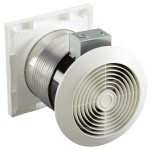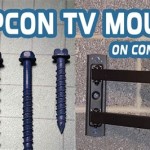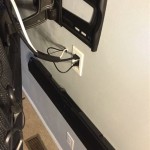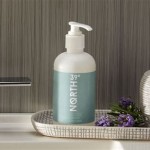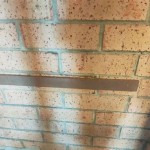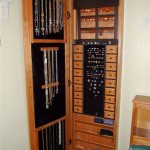Understanding the Components of a Wall Mounted Hose Reel
A wall-mounted hose reel is a convenient and space-saving solution for storing garden hoses. Its ability to keep hoses organized, untangled, and readily accessible makes it a popular choice for homeowners and gardeners alike. While the overall function is relatively simple, the effectiveness of a wall-mounted hose reel relies on the quality and interaction of its individual parts. Understanding these components is crucial for proper maintenance, troubleshooting, and making informed purchasing decisions.
This article will delve into the various parts that constitute a wall-mounted hose reel, explaining their functions and how they contribute to the overall performance of the system. From the sturdy mounting bracket to the smooth-operating winding mechanism, each component plays a vital role in ensuring the hose reel's longevity and usability. Recognizing the importance of each part will empower users to maintain their hose reels effectively and address any potential issues promptly.
Essential Parts of the Hose Reel Structure
The structural integrity of a wall-mounted hose reel is paramount for its durability and ability to withstand the weight of a filled garden hose. Several key components contribute to this stability, working in concert to provide a reliable and long-lasting storage solution.
The
mounting bracket
is the foundation of the entire system. Typically constructed from heavy-duty steel or reinforced plastic, this bracket secures the hose reel to the wall. The design and material of the mounting bracket are crucial, as it must be strong enough to support the weight of the reel and the hose, especially when the hose is full of water. The bracket's design often incorporates multiple mounting points to distribute the weight evenly and prevent stress on the wall. Some models include pivoting mechanisms allowing the reel to swing for a wider range of hose deployment.The
reel core
ordrum
is the cylindrical structure around which the hose is wound. Its size directly impacts the amount of hose it can accommodate. The material used for the reel core often includes high-impact plastic, powder-coated steel, or aluminum. Plastic cores are lightweight and resistant to rust, while metal cores offer superior strength and durability. The reel core's design may include features like hose guides or grooves to ensure even winding and prevent kinks in the hose. The diameter of the core also influences how tightly the hose is coiled, which can impact water flow and hose longevity.The
frame
provides structural support for the reel core and houses the winding mechanism. Constructed from similar materials as the mounting bracket, the frame must be robust to withstand the stresses of winding and unwinding the hose. The frame also provides a protective barrier for the internal components of the winding mechanism, shielding them from the elements and potential damage. The design of the frame often incorporates ergonomic features, such as handles or grips, to facilitate easy operation.Finally, the
hose guides
orhose layers
located on the reel or frame help guide the hose during winding and unwinding. These guides prevent the hose from bunching up in one area of the reel, ensuring even distribution and minimizing the risk of kinks or tangles. They are usually made from durable plastic or metal and are designed to be smooth to prevent abrasion to the hose surface, therefore extending the life of the hose.Examining the Winding and Connection Components
The winding mechanism and connection components are essential for the functionality of a wall-mounted hose reel, enabling users to easily extend and retract the hose while maintaining a secure connection to the water supply. The design and quality of these components significantly impact the ease of use and overall performance of the hose reel.
The
winding handle
orcrank
is the primary interface for retracting the hose onto the reel. It is typically attached to a gear mechanism that multiplies the user's force, making it easier to wind the hose. The handle's design emphasizes ergonomics, with features like a comfortable grip and a smooth turning action. The material construction includes durable plastic or metal. The length of the handle influences the amount of leverage available, with longer handles generally requiring less effort to wind the hose.The
gear mechanism
translates the rotational motion of the winding handle into the rotation of the reel core. This mechanism typically consists of a series of gears that increase the torque and reduce the speed required to wind the hose. The quality of the gears is critical for smooth and reliable operation. Metal gears are generally more durable and resistant to wear than plastic gears. The gear ratio influences the effort needed to wind the hose; a higher gear ratio results in easier winding but slower retraction.The
swivel joint
connects the inlet hose to the reel core, allowing the reel to rotate independently of the water supply. This joint must be watertight and durable to prevent leaks and withstand the constant pressure of the water supply. The swivel joint typically incorporates O-rings or other sealing elements to ensure a secure and leak-free connection. The material construction often includes brass or stainless steel for corrosion resistance and longevity. Its design must allow for free rotation without restricting water flow.The
inlet hose
andoutlet hose
connect the reel to the water source and the spray nozzle, respectively. Inlet hoses are typically short and flexible, while outlet hoses can vary in length to accommodate different yard sizes. The hoses must be durable and resistant to kinks, cracking, and UV damage. Common materials include rubber, vinyl, and reinforced polymers. The diameter of the hoses also influences water flow, with larger diameters generally providing better performance.Additional Features and Components
Beyond the core structural and functional components, many wall-mounted hose reels incorporate additional features and parts designed to enhance usability, convenience, and longevity. These features can significantly improve the user experience and make the hose reel a more valuable addition to any gardening setup.
Automatic rewind mechanisms
are available on some models, using a spring-loaded or motorized system to automatically retract the hose. These systems offer hands-free convenience and can save time and effort. Spring-loaded mechanisms use a coiled spring that is wound when the hose is extended and releases its energy to retract the hose. Motorized systems use an electric motor to drive the winding mechanism, often with remote control operation. Automatic rewind systems may include features like adjustable retraction speed and hose guides to ensure even winding.Hose braking systems
prevent the hose from retracting too quickly, which can cause damage to the reel or surrounding objects. These systems typically use a friction-based mechanism to slow down the hose's retraction speed. The braking system may be adjustable to accommodate different hose lengths and weights. The design often incorporates a dampening effect to provide a smooth and controlled retraction.Weather-resistant housings
orcovers
protect the hose reel from the elements, extending its lifespan and preventing damage from sun, rain, and snow. These housings are typically made from durable plastic or metal and are designed to be UV resistant and waterproof. The design may include ventilation to prevent moisture buildup and condensation inside the housing. Some models incorporate a locking mechanism to secure the cover and protect the reel from theft or vandalism.Accessory trays
orstorage compartments
provide convenient storage for nozzles, sprayers, and other gardening tools. These trays can be integrated into the frame or mounted separately near the hose reel. The design includes compartments of various sizes to accommodate different tools and accessories. The materials construction include durable plastic or metal. Accessory trays help keep gardening tools organized and readily accessible.Lead-in hoses
are short hose segments that connect from the water spigot to the hose reel. These flexible hoses offer improved range of motion and flexibility, reducing the need to reposition the entire reel during use. These are usually made of high-quality, kink-resistant materials for long-lasting life and ease of use.Understanding the function of each component of a wall-mounted hose reel is essential for proper maintenance, troubleshooting, and informed purchasing decisions. By being aware of the role that the mounting bracket, reel core, winding handle, gear mechanism, swivel joint, and other components play, users can ensure that their hose reel operates smoothly and reliably for years to come. This awareness also allows for effective identification of potential problems and timely repairs, preventing major damage and extending the lifespan of the hose reel.

Liberty Garden Replacement Part Brass Swivel For Many Models Hose Reel 4009 The Home

Second Retractable Hose Reel Bracket Classic

Hampton Bay 125 Ft Aluminum Decorative Garden Hose Wall Mounted Reel 704 Hb

Parts For Ames Garden Hose Reel

Hosereels Garant

Suncast Hose Reel Cart 0461685a Repair Part In And Out Tube Parts Kit Assembly

Liberty Garden Replacement Part Brass For 704 705 And 714 Hose Reel 4007 The Home

Genuine Us Made Suncast Hose Reel Replacement Intube Assembly O Rings Repair Kit

In Out Tube Kit Replacement Parts Suncast Corporation

Replacement Parts For 914857 Metal Wall Mounted Hose Reel


